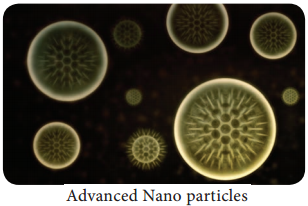Learninsta presents the core concepts of Microbiology with high-quality research papers and topical review articles.
Nanoparticles Production Using Microbes
Particles with one or more dimensions of the order of 100 nm or less. There are a large number of physical, chemical, biological, and hybrid methods available to synthesize different types of nanoparticles. Although physical and chemical methods are more popular in the synthesis of nanoparticles, the use of toxic chemicals greatly limits their biomedical applications, in particular in clinical fields.
Therefore, development of reliable, nontoxic, and eco-friendly methods for synthesis of nanoparticles is of utmost importance to expand their biomedical applications. One of the options to achieve this goal is to use microorganisms to synthesize nanoparticles.
Nanoparticles are biosynthesized when the microorganisms grab target ions from their environment and then turn the metal ions into the element metal through enzymes generated by the cell activities. It can be classified into intra-cellular and extracellular synthesis according to the location where nanoparticles are formed.
The intracellular method consists of transporting ions into the microbial cell to form nanoparticles in the presence of enzymes. The extracellular synthesis of nanoparticles involves trapping the metal ions on the surface of the cells and reducing ions in the presence of enzymes.
The biosynthesized nanoparticles have been used in a variety of applications including drug carriers for targeted delivery, cancer treatment, gene therapy and DNA analysis, antibacterial agents, biosensors, enhancing reaction rates, separation science, and magnetic resonance imaging (MRI).
Many microorganisms can produce inorganic nanoparticles through either intracellular or extracellular routes. This section describes the production of various nanoparticles via biological methods following the categories of metallic nanoparticles including gold, silver, alloy and other metal nanoparticles, oxide nanoparticles consisting of magnetic and nonmagnetic oxide nanoparticles, sulfide nanoparticles, and other miscellaneous nanoparticles (Figure 1.4).
